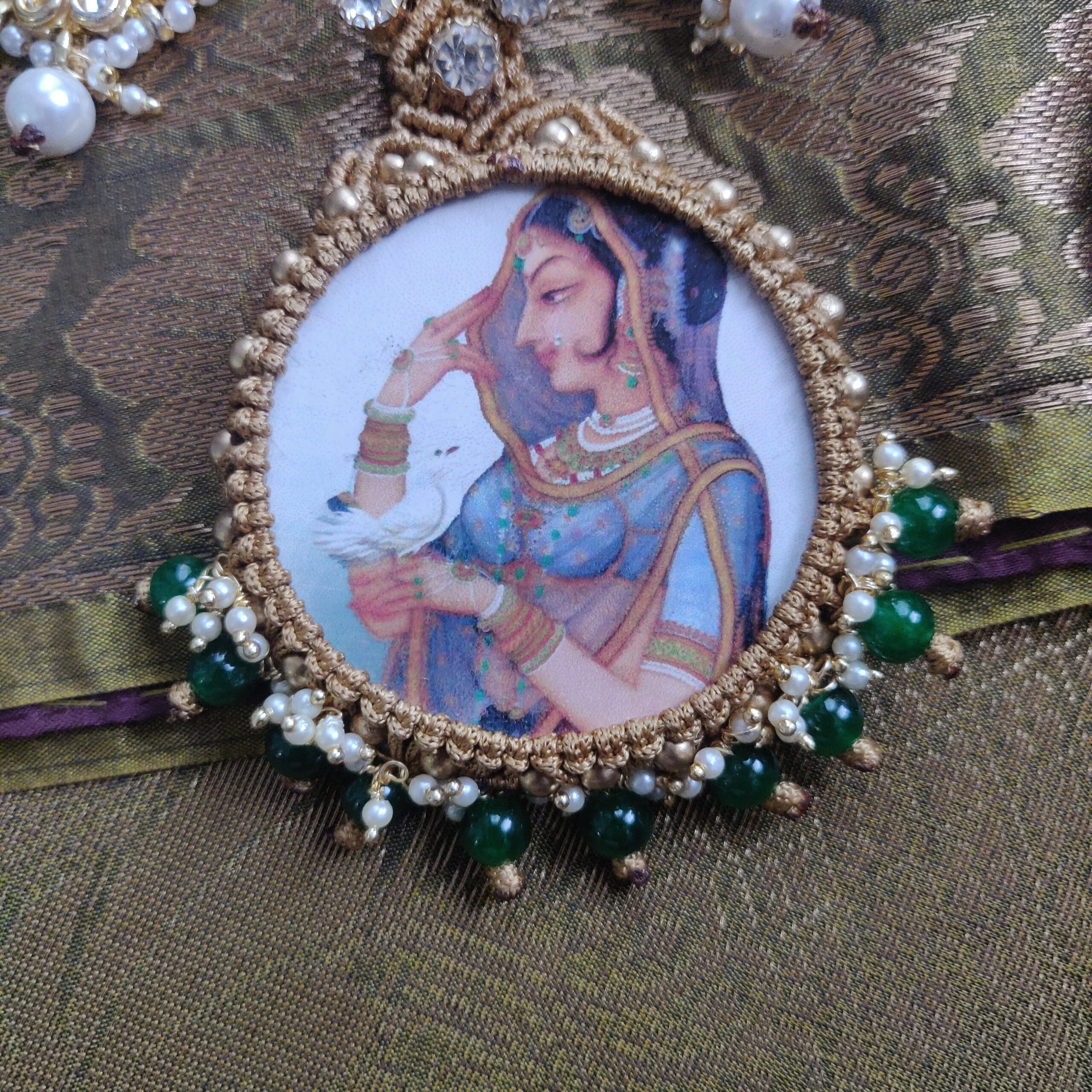A few weeks back, I was scrolling mindlessly on Instagram and I paused. I came across a maker who was planning to adapt a necklace with miniatures that Deepika Padukone as Padmavati wore in the film Padmavat. The picture jewellery researcher in me was thrilled. I waited with bated breath as the maker, Ms Nikhila Sabarish, completed the Padmavat Macrame necklace and unveiled it on her page. I wanted to know more about her and her motivation to adapt this piece. Following a flurry of DMs, she consented to an interview, only for me to find out that she lives five minutes from where I live.


Meet the maker – Nikhila Sabarish
Nikhila is a biologist by education, trained in the field of genetics. While pursuing her second Masters in Buffalo, New York, she rediscovered her love for macrame. “I suddenly had access to various types of yarn beyond what was available in India, which excited me.” While her mother had taught her the basics of macrame as a child, online video tutorials fuelled her passion. She started The Yarn Artisan store in 2018 and became a full-time jewellery maker. As the mother of an active five-year-old, Nikhila, at present, juggles her days, balancing the needs of motherhood with those of entrepreneurship.
Jewellery making
Nikhila believes in using the best quality materials in her work. She chooses yarn that does not rub off colour or irritate the skin. She takes pride in the durability of her jewellery and how easy to wear they are. As a maker she is inspired by everyday life and images that surround her – in real life as well as online. While looking at jewellery made using other materials, she wonders how she can translate the idea to macrame.

“I dislike duplication,” she remarks, “the original designs are beautiful and represent the skill of the artisans who have made them, and designers who have envisaged them. I do not want to recreate it but rather translate it to my medium, which is macrame.” In translating the design, she adapts the intricacies of the design to suit her materials. She does intricate texturing and overlapping using yarn, making the resulting pieces more textured than the metal jewellery that inspired her to begin with. The Padmavat macrame necklace is her recent attempt at such adaptation. I was curious to know not just how she made it but why.
The Padmavat Macrame Necklace
The presence of figurative images in a traditional kundan-polki set struck Nikhila when she came across the necklace designed by designer Queeta Rawat for the 2018 film. Over the course of three weeks or twenty seven hours, she knotted a necklace and earrings of yarn, beads, MDF pendants, and rhinestones.

“Macrame jewellery is lightweight, even with all the beads and stones that I add to it. Therefore, it was important that I pick a lightweight base for my images,” points out Nikhila when asked about the MDF bases.
“I want my work to be secular. So, I chose portrait images of Rajput princesses that are avaible in the common domain for this necklace.” This also solved the issue of visibility as the image in the last pendant is not visible in the film. After several experiments, she decided to decoupage the images on mdf, painting the edges and varnishing them before carefully framing them with thread. By skillfully manipulating the antique gold yarn, she added beads in gold, white and green colour to mimic the original colour palette.


“I am a ‘visual’ person, I was attracted to the visuality of this piece,” she says. She professes to placing visual inspiration over historical research reminding me of my younger self figuring our picture jewellery for the first time through Chithiram in the fall of 2012.
The Padmavati Macrame set can be purchased here.
A side note about the necklace worn in the film
While the film has rich and historically accurate costumes, this necklace is out of place in the film. Picture jewellery was introduced in Mughal India by the British ambassdor Thomas Roe in the 17th century. While it was soon adapted in India with Hindu religious imagery, it was not meant for human use until the 18th century. Then how is that a Rajput queen, Rani Padmini wore such jewellery in the 13-14th century during the Sultanate period? Even if we were to consider the ballad Padmavat by Sufi poet Malik Muhammad Jayasi written in 1540 as the primary text on which the movie is based, it is still a century too early.
In my opinion, the necklace is significant because it does not belong. It shows how memory is influenced to an extent where we attribute a phenomena from a later time period that is entwined in our cuture to an earlier time period. Then there is the question of whether the story itself is fact, fiction or a combination of the two.
To find out why and how period films are influenced by community memory read my article on Padmavat jewellery and memory here.
I hope you find it interesting
Cheers



What do you think?